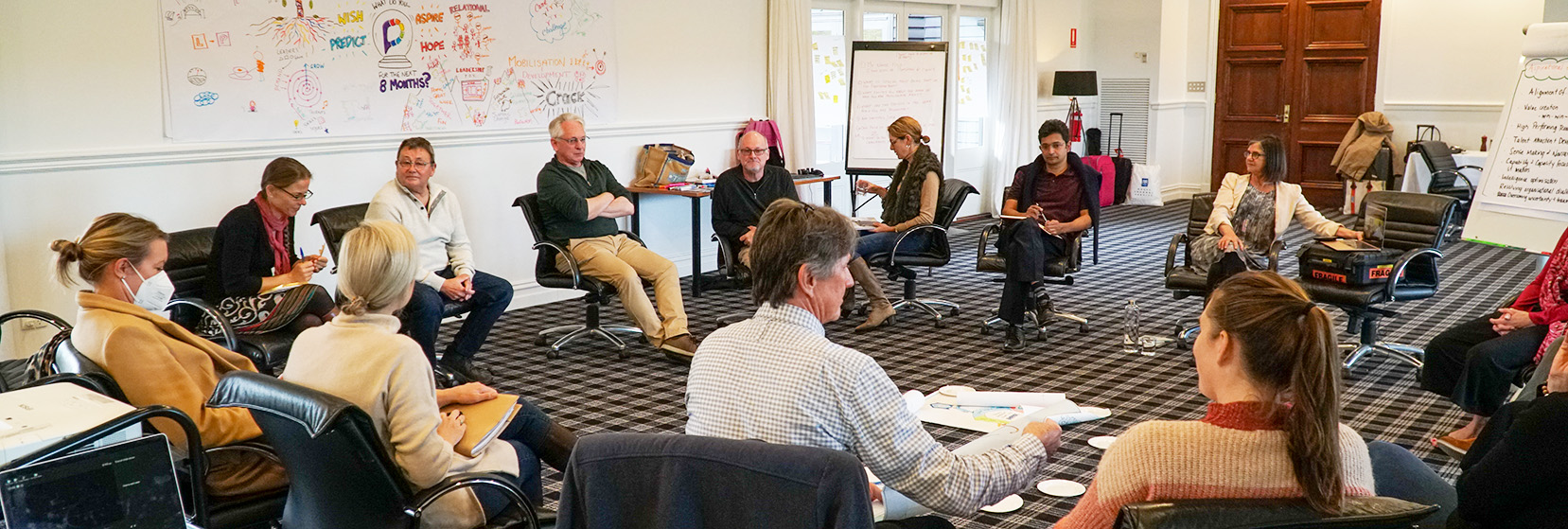
21 Apr Does your team have a culture of psychological safety?
The term Psychological safety sounds quite serious, doesn’t it?
From a team perspective it can be interchanged with the work Co-Inquiry, does your team feel really safe to co-inquire and challenge each other in a safe way?
Have you noticed or explored this in your team?
“If you can banish fear, install true performance-based accountability and create a nurturing environment that allows people to be vulnerable as they learn and growth they will perform beyond your expectations and theirs” Timothy Scott 2020
We have all experienced low psychology safety in a group environment over our working careers or even in social settings; you may just have not thought to call it that or know the term. It’s that feeling where you don’t feel safe to share your opinions, views or ideas because you are worried about being made fun of, ridiculed or embarrassed.
I can think of several occasions over my working career of having that feeling, it used to knot me up inside. Instead of focusing on contributing to a great idea in the team, you stay quiet and step into distance or feel like you don’t belong. In my case it was often led by the team leader, who didn’t cultivate a team environment that valued psychological safety or were often the cause of it! Not a great way to build a collaborative team environment.
There are so many impacts of absence of psychological safety in a team.
It can impact emotionally, neutralize performance, paralyze potential and decrease an individual’s self-worth. It dries up creativity, causes compliance instead of commitment and regresses innovation.
So many downsides, do you want that for your high performing team?
As a team leader your role is to increase the intellectual friction while decreasing the social friction. Innovation is let by creative abrasion and constructive dissent. In managing these two categories the leaders role is to create brave collaboration.
Trust vs. Psychological Safety
As a team leader you may think no that’s not us, we have heaps of trust in our team. But trust is different. Trust is an individual construct and something that occurs between two people. Can one team member trust the other team member will complete his part of the project on time ?
Psychological safety is a group construct, its about the team knowing, sensing and feeling if the team environment they inhabit is safe to share and learn and admit mistakes. It can often stem from the culture set by the team leader.
Do you as a team leader give permission for the team to show their vulnerability and mistakes, is that the culture you create?
And if you are a leader in a male dominated environment like banking, construction, to name a few, how can you be sure that the jibes and blokey behaviour are ok for everyone? So no, this isn’t about getting soft and all over EQ like. This is about looking at tools that can improve your team’s performance and not being afraid to play.
So how do you know you have psych safety in your team? To have a team who can show their vulnerability to even discuss this can take time. Perhaps it is weaven into your team’s charter about how you as a team would like to operate.
Here are a list of the following indicators to consider. This could precipitate a conversation with your team about the concept, and discussion on each indicator at your next BAU meeting or offsite. But remember different members of the team may feel differently about these to others, because some may feel safer than others at different times.
Indicators of good team psychology safety or co-inquiry
- You have good open communication
- All team members are able to share their concerns and ask questions in the meetings. Sometimes leaders only notice the more vocal ones who can override the quieter ones.
- Team members feel comfortable to share their mistrust
- Members can work through conflict together – are your team members happy to have constructive conversations directly or is their conversations going on behind the scenes with a third party.
- Ability to ask for help
- That team members have no fear of judgement, ridicule or repercussions for mistakes or failure
- The team is respectful of its fellow team members – it thinks about the regard and esteem it gives to each other and the value and appreciation
In Tim Scots work ‘The 4 Stages of Psychological Safety’ he identifies 4 levels of Psychological safety for individuals to move through.I have included a brief overview below. Look at how well you think new team members are on boarded through this process and where your existing team is.
Stage 1 Inclusion Safety
The formal admittance to the team, the onboarding process of new members. Being brought into the fold. Overcoming bias about difference or diversity. This is the process of offering people a shared identity. “you are now part of the executive finance team” but it does not mean they are fully accepted. Informal membership to the team can be granted or withheld by the team or members of the team. Are people invited to lunch is there still an inner circle they are not part of. Inclusion safety is very important as the first step
- Does your executive team have internal clicks, or an inner team, perhaps the team that always go out for lunch together?
Stage 2 Learner Safety
To gain learner safety team members need to feel safe to ask questions make mistakes and experiment. If they don’t they can remain quiet, passive and afraid of being embarrassed. How many new team members feel safe to do that? The executives I coach often need support to build confidence to share their views on new ELT or SLT teams they are stepping up on to. So as a team perspective how do you onboard new people?
- How does your team handle this when it onboards people
- Does your team project a culture that gives permission to experiment, make mistakes and ask ‘dumb’ questions
- Does your current team have learner safety?
Stage 3 Contributor Safety
As the individuals contribution increases and they are performing well in their chosen roles and not offending the teams social norms the team grants what is called contributor safety. This is more autonomy to contribute. This transition can also depend on credentials, title, position or previous authority. To obtain this level the team must support with encouragement
An individual at this point can be denied contributor status based on bias, arrogance or insecurity of the leader, prejudice, lack of empathy, previous team norms of behaviour around insensitivity.
Stage 4 Challenger Safety
The final stage of psychological safety where the individual feels comfortable to challenge opinions without fear of damaging their personal reputation, fear or reprisal. The level to speak your truth. At this level individuals overcome the pressure to conform and can participate creatively.
A linked in study of the most important soft skills identified creativity as the top skill needed. However this skill is protected in all of us unless we feel safe to express it. Scott cites the failure of commercial organisations such as Kodak, Toys R US, Blockbuster down to a lack of innovation. Challenger safety is a license to innovate.
This is such a rich topic, this article does not do it justice. If you are interested in learning more see the references below or if you are looking for a Team Coach to support you with the journey of developing a HPVT – High Performing Value Team then please contact me below.
Written by Selina Ryan
Director,
PiqueGlobal
References
- Tammi Turner
- GTCI Global Team Coaching Institute
- Tim Scott – The 4 Stages of Psychological Safety’ 2021
- Amy C. Edmondson – the fearless organisation
Selina Ryan is a passionate senior women’s leadership coach and systemic team coach building high performing and high value teams.
She works with women stepping up on to SLT, ELTs or Boards, supporting them to step into their power, self- esteem and take their place at the table with confidence and fortitude.
Her work with teams supports teams to look systemically at their role within the organisation and wider stakeholder group. cementing their purpose, co-creating internal team relationships, connecting with stakeholders and applying collective learning.
If you would like to chat about any leadership or team coaching issues please reach out HERE via this link and we can set up a zoom meeting in both our calendars, I would love to connect or connect with me on LINKEDIN. ☺

